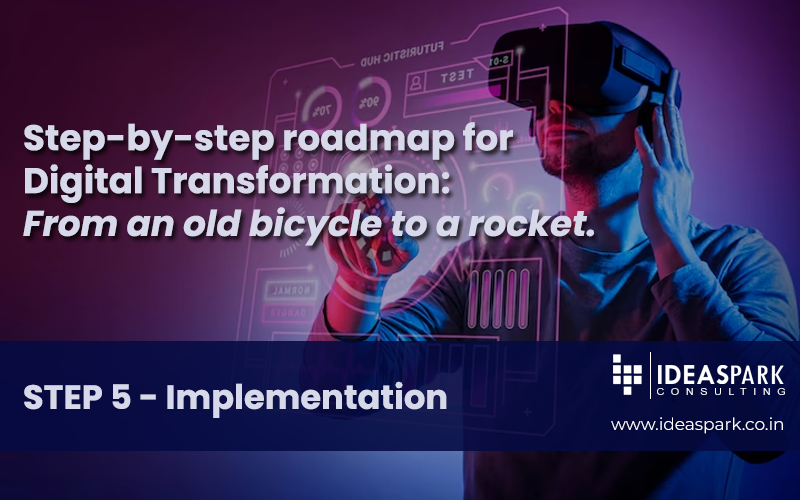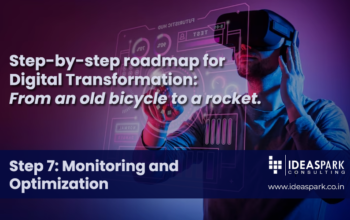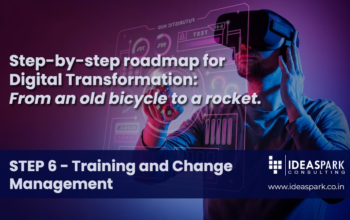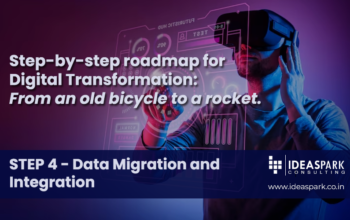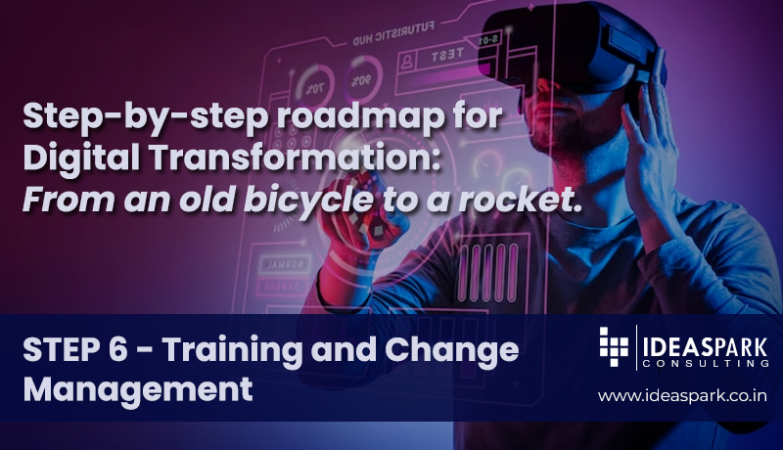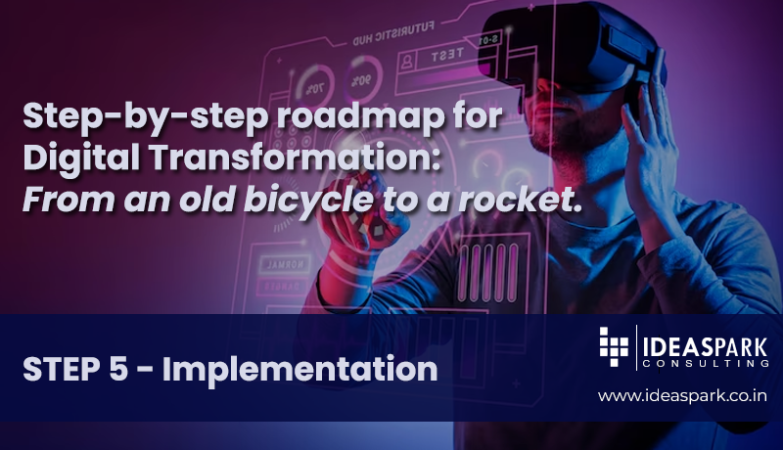In our earlier conversation, we delved into the concept of “Digital Transformation and its initial steps,” and the second step, “Set Clear Objectives.” We have also discussed about he Step 3- “Technology Selection” too. We discussed about Data Migration and Integration as the Step 4 as well.
If you haven’t had the opportunity to review it yet, please take a moment to explore the respective links provided.
In today’s fast-paced digital landscape, businesses must adapt or risk being left behind. Digital transformation is not just a buzzword; it’s a strategic imperative for organizations looking to thrive in the digital age. Much like upgrading from an old bicycle to a rocket, embarking on a digital transformation journey requires careful planning and execution. In this in-depth analysis, we’ll explore step five of the roadmap: Implementation – the crucial stage where chosen technologies and processes are deployed.
Step 5: Implementation
Implementation marks the pivotal phase in the digital transformation journey, where the carefully selected technologies and processes are put into action. This phase encompasses several critical steps aimed at effectively integrating digital solutions into the existing framework of the organization.
Technology Deployment: The first step involves the actual deployment of chosen technologies. Whether it’s cloud computing, data analytics platforms, artificial intelligence tools, or automation software, organizations must ensure seamless integration with their existing IT infrastructure. This requires meticulous planning, testing, and configuration to minimize disruption to ongoing operations.
Process Integration: Alongside technology deployment, it’s essential to integrate new processes into the organizational workflow. This may involve redesigning workflows, establishing new protocols, and redefining roles and responsibilities. By aligning processes with digital capabilities, organizations can maximize efficiency and optimize resource utilization.
Training and Upskilling: As new technologies and processes are introduced, employees must be adequately trained to use them effectively. Training programs should be tailored to the specific needs of different teams and roles within the organization. Upskilling initiatives can help bridge any knowledge gaps and empower employees to embrace the changes brought about by digital transformation.
Change Management: Effective change management is crucial for overcoming resistance and fostering a culture of innovation. Leaders must communicate the rationale behind the digital transformation, address concerns, and actively involve employees in the process. By soliciting feedback and involving stakeholders at every stage, organizations can ensure smoother adoption of new technologies and processes.
Quality Assurance and Testing: Before fully implementing new technologies and processes, thorough testing and quality assurance are essential to identify and mitigate any potential issues or bugs. This involves conducting various tests, including functionality testing, performance testing, security testing, and user acceptance testing. By ensuring the reliability and stability of digital solutions, organizations can minimize the risk of disruptions and downtime.
Scalability and Flexibility: Digital transformation initiatives should be designed with scalability and flexibility in mind to accommodate future growth and changes in the business environment. Organizations must assess the scalability of their chosen technologies and processes to ensure they can adapt to evolving needs and demands. Additionally, flexibility in implementation allows for agile adjustments and optimizations as the transformation journey progresses.
Monitoring and Optimization: Once implemented, continuous monitoring and optimization are critical for maximizing the impact of digital transformation initiatives. Key performance indicators (KPIs) should be established to track the effectiveness of new technologies and processes. Regular assessments and feedback loops enable organizations to identify areas for improvement and make data-driven decisions to optimize their digital operations.
In conclusion, successful implementation of digital transformation requires a strategic and methodical approach, encompassing technology deployment, process integration, training, change management, quality assurance, scalability, and ongoing optimization. By effectively deploying chosen technologies and processes, organizations can unlock new opportunities for innovation, growth, and competitive advantage in the digital age.
For a FREE assessment, connect with our Sales department at [email protected] or WhatsApp 91-8904207147. Visit https://ideaspark.co.in/ to understand more about our company.
Moving forward in the Digital Transformation process, the upcoming focus will be on Training and Change Management —a topic that we’ll explore in the next segment.
DigitalTransformation, BusinessInnovation, TechUpgrade, EfficiencyJourney, StrategicChange, ProcessImprovement, InnovationDrive, TechEvolution, DigitalStrategy, BusinessTransformation, ChangeManagement, FutureOfWork, AdaptiveTech, EvolvingBusiness, TechIntegration, Modernization, DigitalAdvancement, InnovateOrStagnate, BusinessEfficiency, TechRevolution, AgileBusiness, DigitalInnovation, TransformativeTech, StrategicPlanning, OptimizeProcesses, TechLeadership, EfficientOperations, BusinessGrowth, AdaptAndThrive, FutureReadyBusiness
#DigitalTransformation #BusinessInnovation #TechUpgrade #EfficiencyJourney #StrategicChange #ProcessImprovement #InnovationDrive #TechEvolution #DigitalStrategy #BusinessTransformation #ChangeManagement #FutureOfWork #AdaptiveTech #EvolvingBusiness #TechIntegration #Modernization #DigitalAdvancement #InnovateOrStagnate #BusinessEfficiency #TechRevolution #AgileBusiness #DigitalInnovation #TransformativeTech #StrategicPlanning #OptimizeProcesses #TechLeadership #EfficientOperations #BusinessGrowth #AdaptAndThrive #FutureReadyBusiness #DataMigration #DataIntegration #DigitalTransformation #DataManagement #DataQuality #DataStrategy #ITIntegration #CloudMigration #LegacySystems #DataMapping #DataCleansing #ETLProcess #SystemIntegration #DataOps #TechMigration #DigitalStrategy #DataArchitecture #BusinessIntegration #Modernization #DataFlow
Embark on a digital transformation adventure, akin to a road trip. Evaluate current processes, pinpoint areas for improvement, strategize upgrades, and execute changes to navigate an efficient business route.

